Tula Tokarev: man and gun
Authoritative reference books on small arms, not only in Russia, but also abroad, always include a TT pistol (Tula, Tokarev) in the list of the best army pistols of the twentieth century. In the Soviet Union, the TT pistol was put into service in the 1931 year and served “faithfully” for about 30 years. In addition to the USSR, the TT pistol was in service in 30 countries. Even in Nazi Germany, the technical characteristics of the TT pistol were rated very high: all captured pistols were subject to mandatory surrender to technical-brigade teams, where they were shot, repaired and repaired, if necessary, by means of cleaning. Then, under the neck of Pistole-615 (r), they came to the Wehrmacht.
Today, "Totosha" (as sometimes called the TT in the middle of the 30-s) is very popular among fans of long-range aimed shots from a pistol, as well as among weapon collectors all over the world.
How the esaul became a gunsmith
The history of the TT pistol is inseparable from the uneasy bright biography of its creator - Fyodor Vasilyevich Tokarev. The unique combination of excellent combat performance, operational reliability and manufacturability, typical of "Totosh", could hardly have arisen in other design conditions - beyond Fyodor Tokarev's considerable personal combat experience.
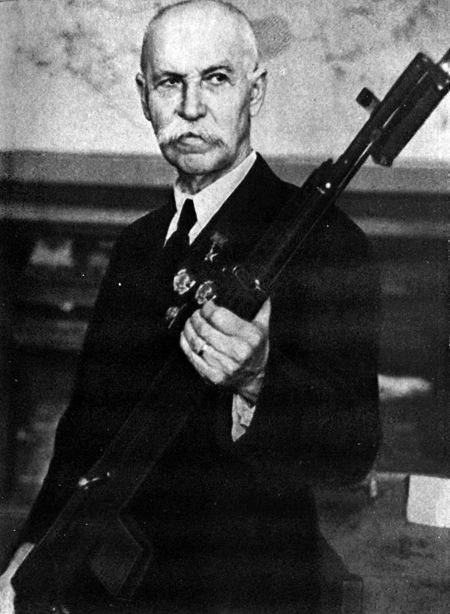
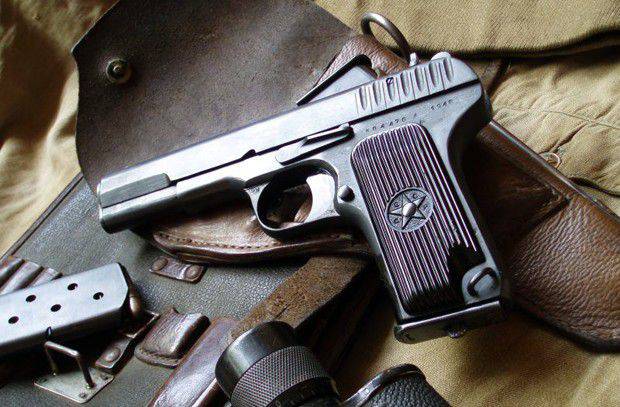
The future gunsmith was born 2 (14) in June 1871 of the year in the village of Egorlyk Region of the Don Cossacks. As a teenager, little Fedor mastered the blacksmith's craft, was distinguished by a sincere burden to the metal.
In 1887, Tokarev enrolled in the Novocherkassk military-craft school, where his master was a gunsmith, the aesaul Vasiliy Chernolikhov. Tokarev's biographers note that it was Master Chernirihov who instilled true love into the future gunsmith, even a passion for design work.
Having completed, as noted in the description of the directorate, "with excellent diligence" study at the Novocherkassk military-craft school, Fyodor Tokarev was sent to complete the first phase of service in the 12 Don Cossack Regiment. In the 1900 year, successfully combining teaching and studying at the Novocherkassk Cossack School, Tokarev gets his first officer's rank - cornet. The time comes for the second line of the Cossack service, and the cornet of Tokarev again goes to the troops.
It is officially considered that the remarkable Russian armorer did not have a higher technical education. From a formal point of view, this is true. However, a kind of “higher technical education” was for the Cossack to study at the Officer Rifle School in the capital Oranienbaum, which included junior officers under the age of 45 years who had experience of commanding a company of at least two years.
In Oranienbaum, Fedor Tokarev made his debut as a weapon designer. The automatic rifle he created in the experimental workshop of the Officer’s school — equipped with the Mosin three-line mechanism — has earned the approval of the Weapons Division of the General Staff Artillery Committee. In the 1908 year, simultaneously with the assignment of the next Cossack rank of esaul, Fyodor Tokarev was seconded to the Sestroretsk Arms Plant. The Artillery Committee sets the task for the young gunsmith: to bring the model of an automatic rifle he created to the technological level of mass production.
To dream - through war and execution
In 1910, the first automatic model of Tokarev successfully passed the commission and field tests. At the request of the Artillery Committee, the War Ministry paid the Esau Saul Tokarev 1000 rubles of premium - a very significant amount for those times (300 – 350 rubles - the cost of a mounted horse).
In 1912, Tokarev sends a completely new model of an automatic rifle, which is not related to the original SI model, for testing. Mosin. Subsequently, this model was the basis for the Tokarev self-loading rifle (SVT-38, SVT-40), which was widely used by the Red Army in the first period of the Great Patriotic War.
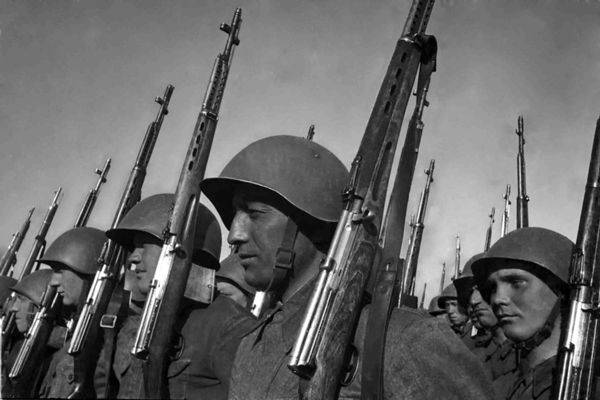
The Artillery Committee of the Military Ministry approved the further development of the new Tokarev product. At Sestroretsk plant received instructions: to make an experimental batch of 12 rifles. By July 1914, this order (with simultaneous debugging of the bolt group of weapons) was almost completed, but the outbreak of war prevented the completion of work.
During the First World War - from August 1914-th to January 1916 - Fedor Tokarev was in the army. At the head of the hundreds of 29 Don Cossack regiments, he fought bravely in Poland and Galicia on the Western and South-Western fronts. The command highly appreciated the military merits of Esaula Tokarev - five military orders, including the Order of St. Anna 4 degree with the inscription "For Bravery".
The October coup 1917 of the year catches Fedor Tokarev again at the Sestroretsk Arms Factory. Already with the rank of captain, he introduces the British technology of mass weapons production here. Despite the officer's rank, Tokarev initially managed to avoid the attention of vigilant commissioners. Moreover, in 1918, he was appointed head of the Exemplary Workshop, and then Assistant Director of the Sestroretsk Arms Plant.
Soon engineer Tokarev, who had hidden his Cossack origin, was seconded to restore the work of the Izhevsk Arms Plant after powerful anti-Bolshevik speeches.
By the arrival of Tokarev, an engineer in the city, Izhevsk represented ruins, both technologically and personnel. To restore the work of the ruined workshops to the dates indicated by Lev Trotsky, the Chief of the Red Army, seemed completely unrealistic. Nevertheless, Tokarev managed to start production of Mosin rifles practically out of nothing at Izhmash. However, the quality of these rifles could not go to any comparison with the pre-revolutionary level.
As a result, the military expert Tokarev was accused by the Cheka in “sabotage and sabotage”, and the Revolutionary Tribunal by a decision of August 30 of August 1920 sentenced the gunsmith to “an immediate punishment of revolutionary justice - to be shot”. However, the sentence was not carried out. The cause of the “mercy” manifested was an acute shortage of engineering personnel in the arms industry.
In the summer of 1921, Fyodor Tokarev managed to transfer from the defeated Izhevsk to Tula. Here, over the next 20 years, he successfully worked at the Tula Arms Plant (TOZ) as a lead designer, and then as the head of the Experimental Weapon Workshop. The Tula years of life became the time of the highest flourishing of the Cossack gunsmith, it was during this period that he became the recognized master of the Soviet weapons school and created his best models of small arms.
The birth of a Russian pistol
The uniqueness of the TT self-loading pistol, in addition to its technical characteristics, is that Totosha was the first mass system of this type in the history of Russian weapons.
The regular personal weapons of the fighters and commanders of the Red Army in the 1920s were revolvers of revolvers, which, with their outstanding quality as an aimed shot, were distinguished by an extremely archaic, very slow reloading operation. It was necessary to replace the revolver with a more modern type of personal weapon with a higher rate of fire. At the turn of the 1930-ies in all the armies of the West, excluding the army of Great Britain, only a self-loading pistol was recognized as the only system capable of replacing the revolver.
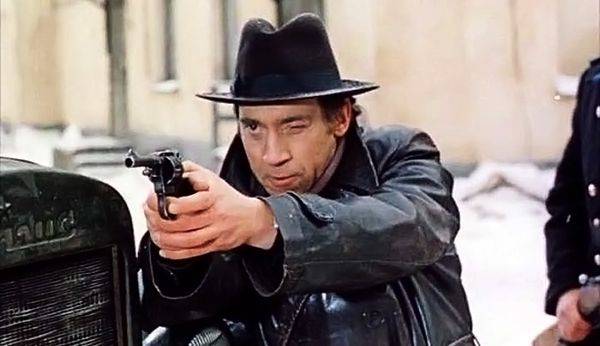
In 1929, a competition was announced for the creation of a self-loading pistol to arm the commanders of the Red Army, which took place in two stages and ended in the autumn of 1930. During the competition, 17 pistols of various designs were tested. The Commission of the People's Commissariat of Defense assessed not only the samples of its main competitors - F.V. Tokarev, S.A. Korovin, S.A. Prilutsky, but also famous foreign pistols: 7,65-millimeter "Walter RR", 9-millimeter "Parabellum P-08", 9-millimeter "Browning M1922", 11,43-millimeter "Colt M1911" and others.
Field tests revealed the superiority of an TT eight-shot pistol in all basic tactical and technical characteristics. Fyodor Tokarev's considerable combat experience allowed him to create a system of short-barreled weapons with a unique range of an aimed shot. According to this important indicator, only the German “Mauser C-96” was able to make up the competition for the Tokarev system, which has a longer barrel length and significantly worse balance than the TT.
“The 7,62-mm automatic pistol of the Tokarev system,” the Red Army Chief of Arms Weapons Ieronim Uborevich reported to the People's Commissariat of Defense, “turned out to be the best of the domestic samples that are not inferior in terms of reliability of operation and ease of handling of foreign pistols.” Uborevich requested a serial order of Tokarev pistols for military trials. The day after the report, February 13 1931, the USSR Revolutionary Military Council decided to mass-produce 1000 pistols of this system for transfer to the troops. This day can rightfully be considered the date of birth of the first Russian army pistol. According to the place of creation and the names of the designer, he received the honorary title “Tula, Tokarev”.
A unique combination of grace and power
The son of the famous gunsmith Paul Mauser, who became an outstanding industrialist of the Third Reich, having familiarized himself with the bench test results in 1941, was sincerely delighted with the technical characteristics of the TT pistol. “The only Russian Tokarev,” exclaimed Mauser Jr., “managed to contain so much power and death in this small space bounded by the elegant contour of his gun!” One cannot but agree with this characteristic of the TT.
In the elegance of form, in some incredible proportionality of all the details, perhaps, only the “Browning М1903” - the best of the pistols of the great John Moses Browning - can compete with the model of Fyodor Tokarev. The external similarity of the design of the TT and the Browning M1903 often gives grounds for reasoning that the Russian gunsmith copied the gun of the famous American. These arguments have nothing to do with reality.
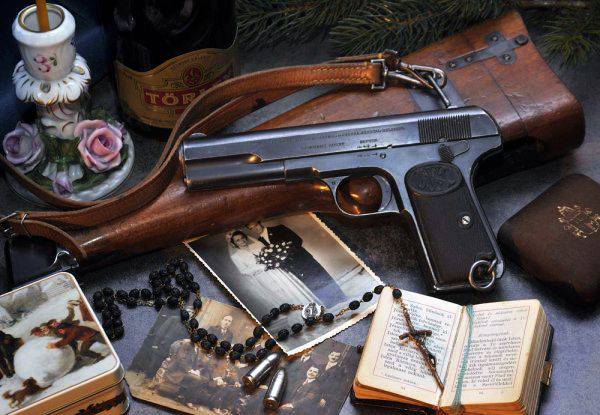
In constructive terms, “Tula, Tokarev” is a kind of synthesis of the modified system of the Colt M1911 pistol, some elements of the “cartridge group” of the Mauser C-96 pistol and the exterior design of the M1903 Browning. The ideology of the TT pistol, thus, combined in this product all the best that at that time the world’s weapon thought had accumulated in terms of designing short-barreled military weapons.
The TT pistol can by no means be called a “copy product” - in the brainchild of Fyodor Tokarev there are quite a lot of completely original assemblies and parts. For example, the placement of a cylindrical fighting spring inside the trigger. And for ease of maintenance of the gun, the designer assembled all the parts of the firing mechanism in the same block. The entire USM node in Totosh can be removed for cleaning and lubrication without the use of special tools. Such a device at the time of setting on the TT did not have any army gun in the world.
In the literature one can sometimes come across complaints that the TT pistol doesn’t have a “full-fledged fuse”. The installation of such a mechanism on the pistol was not difficult, but the gunsmith believed that the combat platoon system of the firing mechanism should be constructively focused on the constant readiness of the weapon for an instant shot.
"Tula, Tokarev" showed both on the range, and in combat conditions high accuracy. Along with a fairly long aiming bar (156 mm), this was facilitated by several successful design solutions. For example, to reduce the dispersion of bullets in the TT design, it was possible to achieve a good smoothness of the descent. Trigger pull on Totoshi is within 2,4 – 2,8 kg, exceeding the corresponding parameters of the “main competitor” - the German Mauser C-96. "Totosha" possessed one of the highest initial bullet speeds for such 30 – 40-s weapons of the XX century. Depending on the cartridge used, it reached 420 – 450 m / s, which ensured the flatness of the shot and the reliable defeat of enemy manpower at a distance of up to 75 meters.
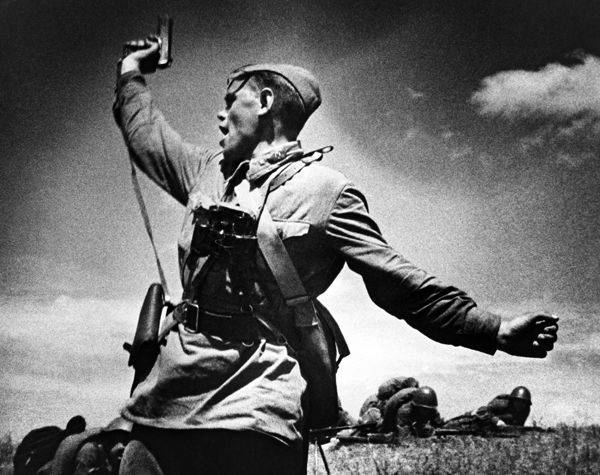
The energy of the shot (that is, the ratio of muzzle energy to the mass of the weapon) did not leave any chances to the TT competitors. “Totosha” showed the energy of the shot within 597 – 599 J / kg, the German “Mauser C-96” - 432 J / kg, “Parabellum R.08” - 461 J / kg, the main US Army Colt M1911 pistol - 410 J / kg
“Tula, Tokarev” remained in the memories of all the front-line soldiers as a very tenacious, reliable in work and, very importantly, easy-to-use weapon.
Long years of impeccable service
The fate of the TT has developed happily. This pistol went into mass production in the 1933 year, and was used as a service weapon in the Armed Forces of the Soviet Union right up to the beginning of the 1960s. In law enforcement, "Totosha" was in service for a dozen years longer.
In the pre-war years, the issue of TT was carried out only by the Tula Arms Plant. At the end of 1941, due to the siege by German troops in Tula and the evacuation of the plant, the production of a pistol at TOZ was temporarily suspended. To compensate for combat losses, the release of the TT by the end of 1942, the year mastered in Izhevsk. During its existence, almost without changing the technical characteristics of the TT pistol, the weapon has undergone several modifications. The latest serial TT appeared in 1951 year, shortly before the cessation of production. Visually, later-issue pistols differ from 40's products in a simplified, smaller notch on the bolt. In total, in the Soviet Union, according to military experts, from 1930 to 1952 a year was made about 1 million 740 thousand TT pistols of various modifications.
Information